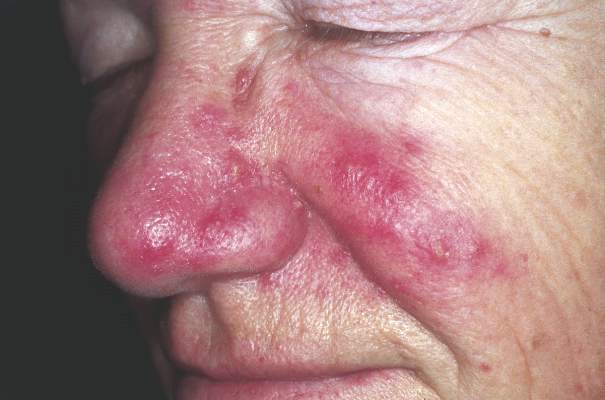AT THE 2016 SID ANNUAL MEETING
SCOTTSDALE, ARIZ. (FRONTLINE MEDICAL NEWS) – Doxycycline significantly reduced the amount of cathelicidin in the skin of adults with papulopustular rosacea, and levels of this antimicrobial peptide correlated with treatment response, according to a double-blind, placebo-controlled trial.
Patients who improved the most on doxycycline also had the lowest activity of serine protease and matrix metalloprotease (MMP) in their skin, said Anna Di Nardo, MD, PhD, of the University of California San Diego in La Jolla. Doxycycline seems to work in rosacea by targeting the cathelicidin pathway, and measuring relevant biomarkers could one day help guide treatment selection, she concluded during an oral presentation at the annual meeting of the Society for Investigative Dermatology.
Skin inflammation in rosacea is associated with high cathelicidin levels and increased activity of serine protease and MMP, but none of these biomarkers are well understood with regard to doxycycline. Therefore, Dr. Di Nardo and her associates randomly assigned 170 adults with papulopustular rosacea to once-daily modified-release doxycycline (40 mg; 84 patients) or placebo (86 patients) for 12 weeks. They assessed disease severity by counting inflammatory lesions and performing Investigator Global Assessments (IGA) of disease activity. They assessed cathelicidin and serine protease by analyzing stratum corneum samples obtained with adhesive tape, and quantified expression of the cathelicidin antimicrobial peptide (CAMP) gene, the matrix metallopeptidase 9 (MMP9) gene, and the serine protease-encoding KLK5 gene by studying small skin biopsies.
As expected, significantly more patients achieved an IGA score of 0 or 1 (clear or near-clear) with doxycycline than with placebo, beginning at week 4 and continuing at weeks 8 and 12 (P less than .05). Likewise, average lesion counts dropped by 45% in the doxycycline group by week 12, but only by 25% in the placebo group (P = .02). Notably, while cathelicidin levels dropped over time in both groups, they were significantly lower for the doxycycline group than for placebo at weeks 2, 4, 8, and 12. At week 12, doxycycline patients also had significantly lower expression of the associated CAMP gene than at baseline or compared with the placebo group. The same trends occurred for KLK5 and MMP9 expression. Furthermore, doxycycline led to a significant drop in serine protease activity by week 8 compared with baseline and with the placebo group.
Treatment response also correlated with lower CAMP expression and with lower serine protease and MMP activity among doxycycline patients, Dr. Di Nardo reported. At week 12, patients with IGA scores of 0 or 1 (clear or near-clear) had the lowest levels of all three biomarkers, while patients with moderate or severe disease had substantially higher levels of all three biomarkers.
Finally, baseline levels of two of the biomarkers significantly predicted treatment response (P less than .05).
“Patients who reached success at 12 weeks were those who started with lower baseline levels of matrix metalloprotease, or lower or intermediate baseline levels of serine protease,” Dr. Di Nardo said. Patients who did not respond to doxycycline may simply have needed a higher dose, she added.
Galderma Laboratories and the National Rosacea Society funded the study. Dr. Di Nardo had no disclosures.



